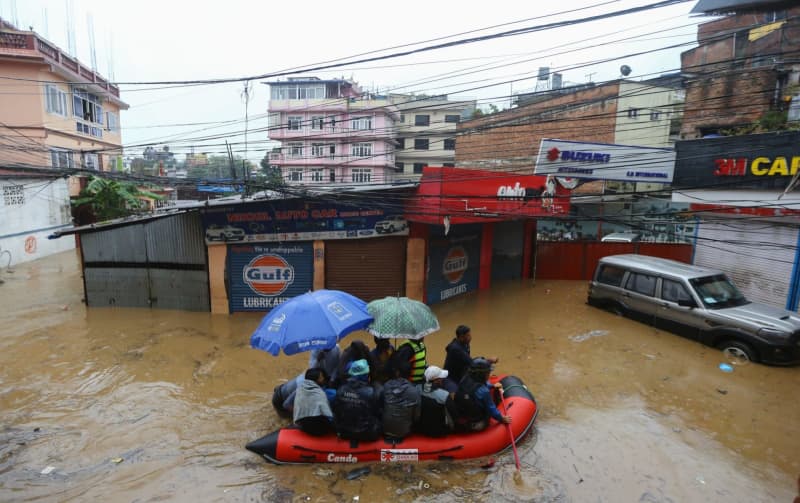The death toll from monsoon-induced floods and landslides in Nepal has risen to 148 after search and rescue teams recovered several bodies from buses buried by landslides, officials said on Sunday.
At least 55 people are still missing. The devastating rains, which started late on Thursday, have ravaged much of the country, especially in the eastern and central regions.
According to Nepali police spokesman Dan Bahadur Karki, 101 people have been injured in various regions since Friday.
“The search for the missing is still ongoing while the affected families are being brought to safety. It may take a few more days,” Karki told dpa.
Since late Saturday, search and rescue teams have recovered at least 35 bodies from buses buried by landslides on the outskirts of Kathmandu, officials said. According to the Nepalese police, around 3,661 people from affected areas have been brought to safety.
More than half of the fatalities occurred in the capital Kathmandu and surrounding districts, which were hit hard by flash floods and landslides.
Local media have described the rainfall in Kathmandu as the worst in decades.
The government has announced free treatment for the injured and relief packages for affected families.
The heavy rain severely damaged infrastructure, including roads and bridges.
While domestic flights have partially resumed, many major roads connecting Kathmandu to the rest of the country remain blocked by landslides, and there have been power and internet outages in some areas.
The government has decided to close all schools across the country for three days and suspend all pending exams from Sunday, according to a statement from the Ministry of Education, Science and Technology.
Although the weather has improved in Kathmandu, authorities are predicting more rain in remote parts of the country until late Sunday.
Nepal’s mountainous terrain and numerous rivers make the country particularly vulnerable to natural disasters.

